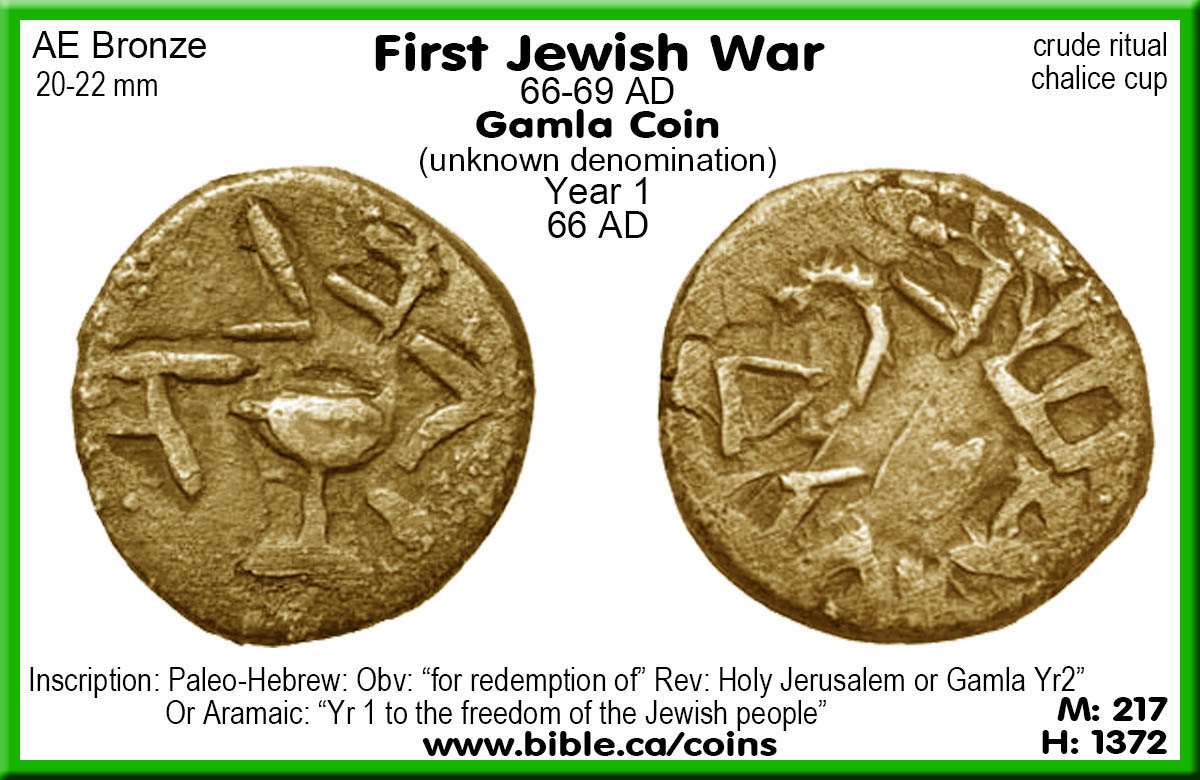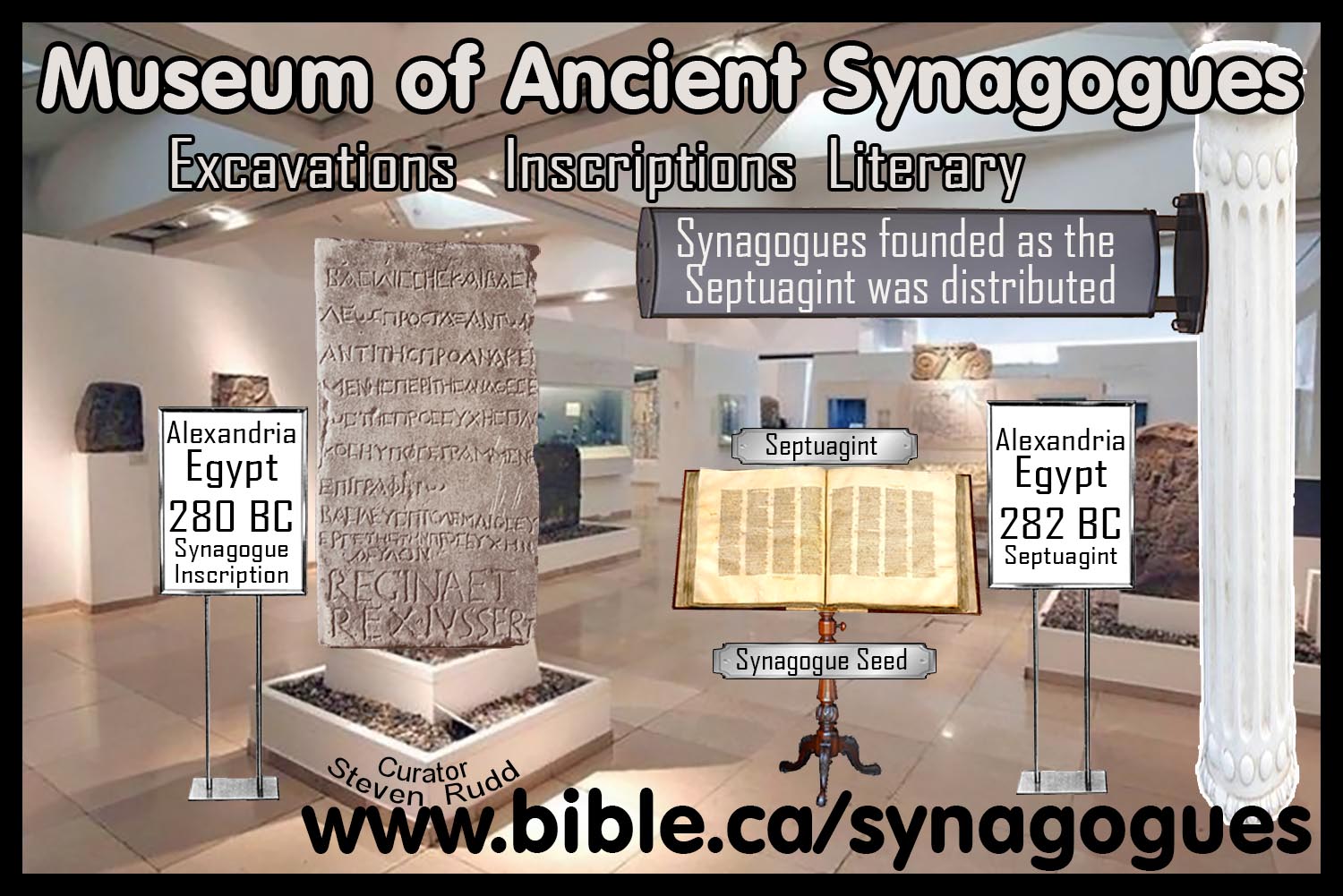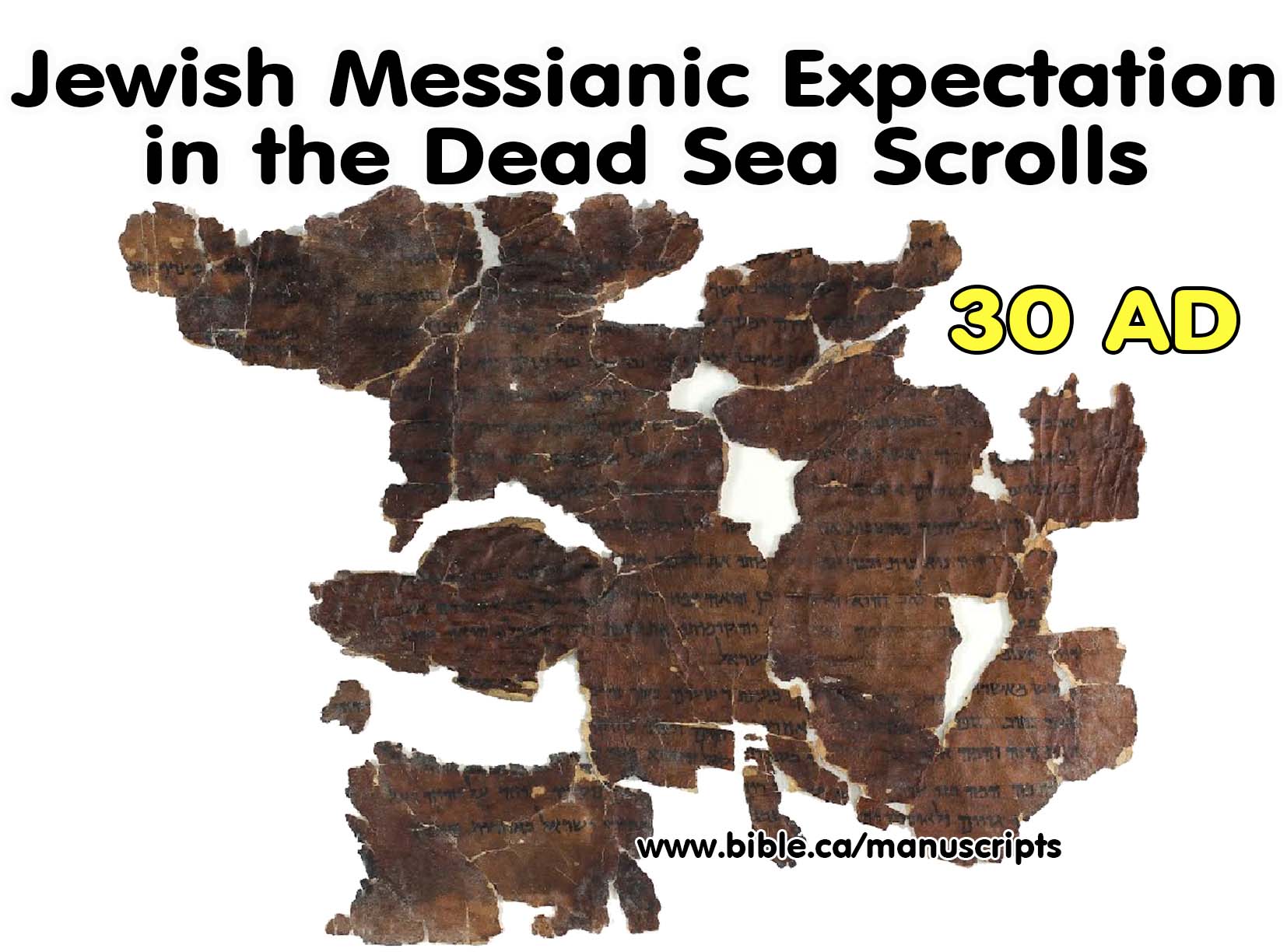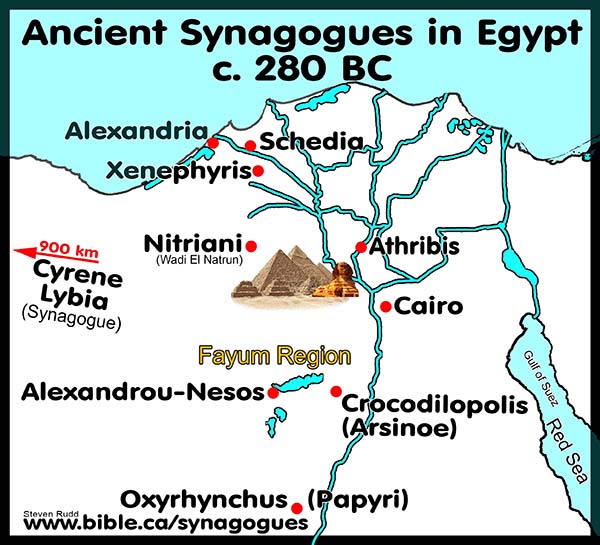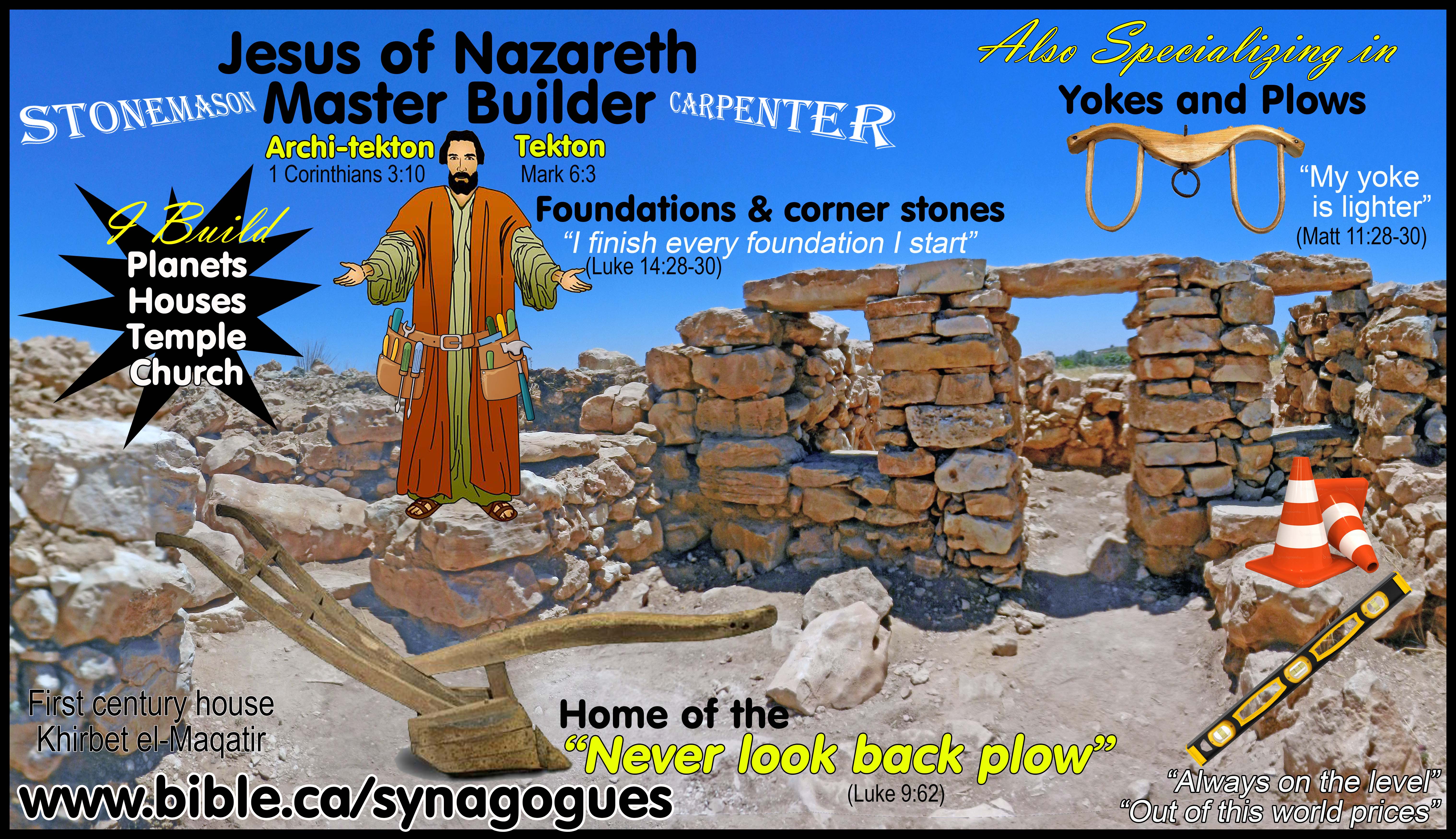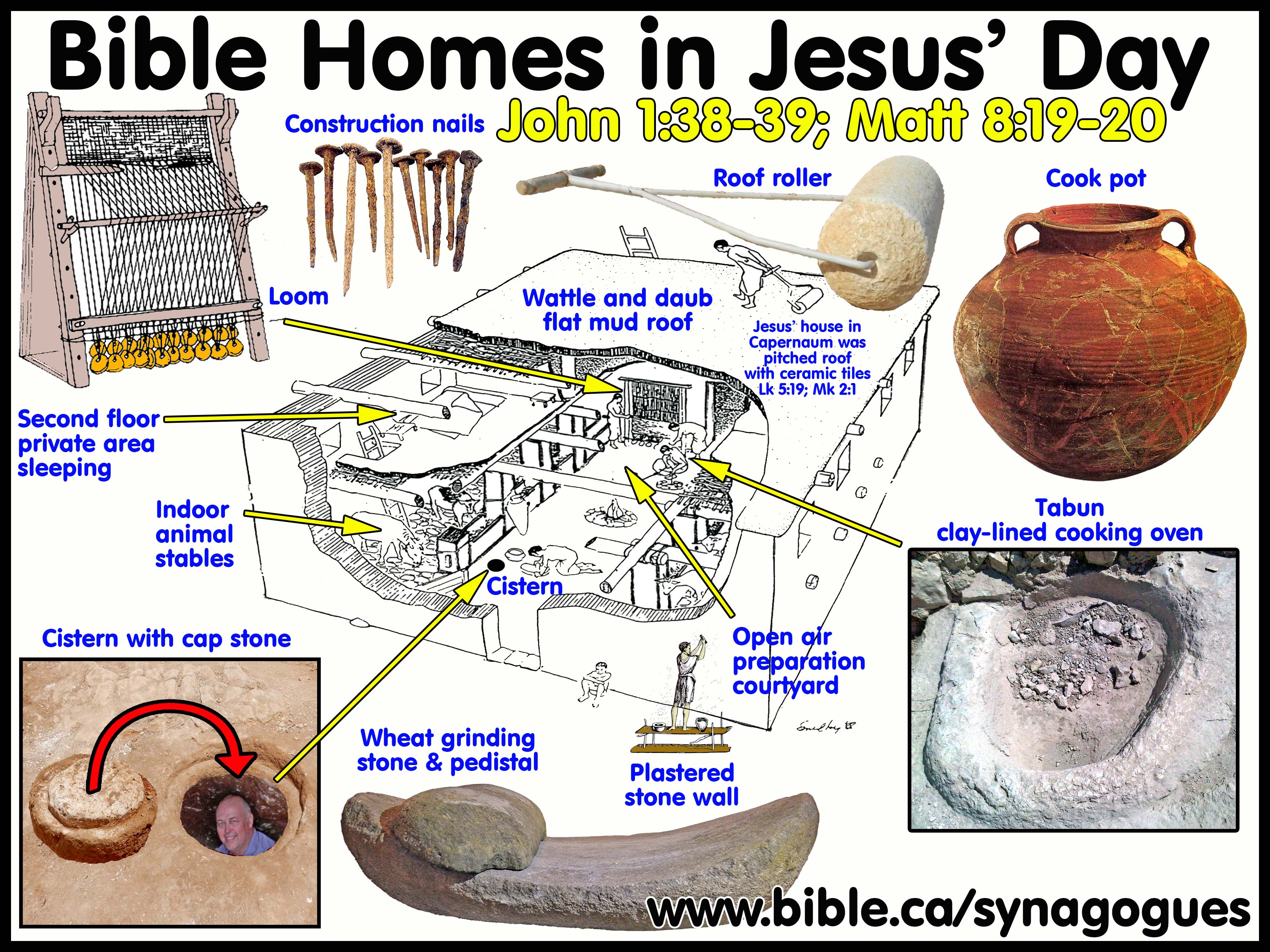First Century Synagogue Top Plans: Gamla 76 BC
Archeological Excavations of Oldest Synagogues in the world
|
Gamla 76 BC |
Click on photos for high resolution
Introduction:
1. Gamla means “Camel” for the single hump shaped hill it was built upon.
a. Like a double humped camel, it was the home of two different zealot rebellions, first in 2 BC then in 66 AD.
b. It was a formidable physical fortress that the Romans had great difficulty defeating with their Ballista and other slings.
c.
“Finds at the synagogue were from the final stage and battle. They included 350 ballista balls, 35 arrowheads, and many
nails and pottery items, among them Herodian lamps, broken jars, and cooking
pots.” (Ancient Synagogues - Archaeology and Art: New Discoveries and Current
Research, Rachel Hachlili, p28, 2013 AD)

2. Gamla was founded by Alexander Jannaeus no later than 76 BC (103-76 BC)
a. As one of the most important spiritual leaders it is unthinkable that Alexander Jannaeus would found this town without a synagogue.
b. The synagogue seen today is a one period occupation site that likely dates back to 76 BC and was used until destroyed in 67 AD.
c. “Gamla is the earliest synagogue structure to have been discovered in Judaea to date'" The building may have been built around the turn of the first century C.E., although a mid-first century B.C.E. foundation, some time between Alexander Jannaeus (103-76 B.c.E.) and Herod (37-4 B.c.E.), has also been suggested. “The Gamla building is architecturally impressive. It is the only public building thus far excavated in that town and may well be the only one that ever existed there. Located adjacent to the eastern wall, the building runs on a northeast-southwest axis and is 21.5 meters long and 17.5 meters wide.” (The Ancient Synagogue, Lee Levine, p54, 1999 AD)
d.
Here is the famous widow’s mite (prutah)
of Alexander Jannaeus dating to year 25 (78 BC): "And
He sat down opposite the treasury, and began observing how the people were
putting money into the treasury; and many rich people were putting in large
sums. A poor widow came and put in two small copper
coins, which amount to a cent. Calling His disciples to Him, He said to
them, “Truly I say to you, this poor widow put in more than all the
contributors to the treasury; for they all put in out of their surplus, but
she, out of her poverty, put in all she owned, all she had to live on.”" (Mark 12:41–44)
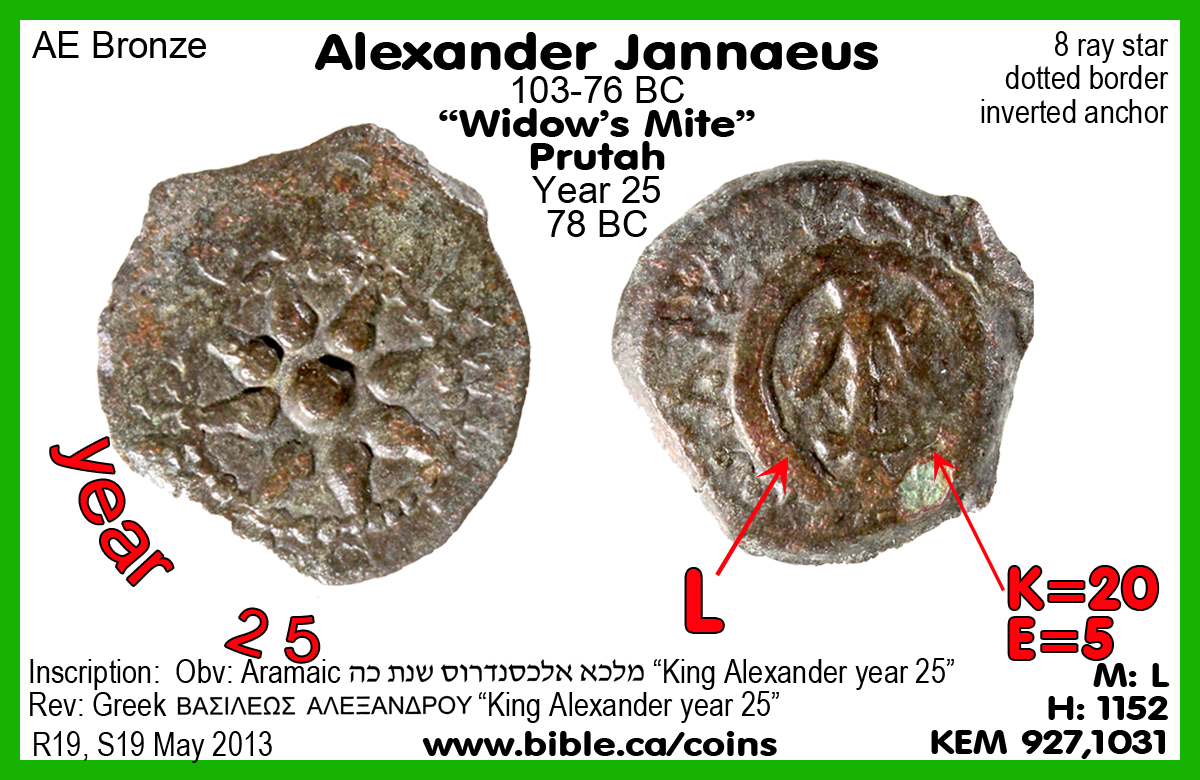
3. Gamla was always a Rebel fortress:
a. 76 BC: Founded by neo-zealot leader Alexander Jannaeus in 76 BC.
b. 2 BC: Judas of Galilee: “Judas of Galilee rose up and perished” 2BC: Acts 5:37; Lk 2:1-3
c. 67 AD: 1nd Jewish War: Pre-Masada: After 7 month siege, Romans defeat Jewish rebels Nov 67 AD Josephus Wars 4:1-83
4. Synagogue details:
a. The assembly hall was 25 x 17 meters with stone benches: 6x6 on outside long wall, 4x4 on outside short wall
b. 20 columns, including four heart shaped corner pillars.
5. We know it had a flat root, not pitched because no ceramic roofing tiles were ever found in the excavation.
6. “The roof was not tiled as no tiles were found, and it was probably constructed of wooden beams. (Ancient Synagogues - Archaeology and Art: New Discoveries and Current Research, Rachel Hachlili, p28, 2013 AD)
7. Synagogue Mikvah: The Christian Maker
a.
A plastered mikveh near entrance was located beside the
synagogue which was fed water from rain water from the roof.

8. The Ark of the Scrolls niche:
a. See also: Niches & Ark of The Scrolls: Prototype of Church Apse
b.
A wooden cabinet was place in this niche area to house
the Septuagint scrolls.

9. The synagogue features a stone bema in the center of the synagogue for either the reader or preacher to stand on.
a. See also: The bema: Prototype of the Church Pulpit
b. The bema could also been dual purpose for a table of the Scrolls.
c. See also: Table of the Scrolls: Prototype of Communion Table
10. Beautiful heart shaped in situ columns can be seen today:
a. See also: Artwork: Heart-Shaped Columns
b.
These columns are typical of early synagogues.

A. Earliest Synagogue Occupation Date (SOD) = 76 BC
1. Excavation date: first century
2. Inscriptional date: none
3. Literary date: Josephus 76 BC
4. SOD computation system details: Excavation date + Inscriptional date + Literary date = SOD.
B. Synagogue Compass Orientation:
1. Orientation East or towards Jerusalem: No.
2. Compass headings:
a. Compass heading towards Jerusalem: 201 Degrees.
b. Distance to Jerusalem: 132 Kilometers.
3. When an archeologist begins excavating a newly discovered synagogue, the first thing he does to determine if it is a first temple, pre-70 AD installation is determine the orientation.
a. If the synagogue points east it is not pre-70 AD but built after 200 AD.
b. If the synagogue is oriented towards Jerusalem it is not pre-70 AD but built after 200 AD.
4. See Orientation: Early Synagogues did not Point to Jerusalem
C. Acts 5:37 Judas of Galilee/Gamla founded the Zealot movement in 2 BC
1. Bible reference:
a. "After this man, Judas of Galilee rose up in the days of the census and drew away some people after him; he too perished, and all those who followed him were scattered." (Acts 5:37)
b. “and besides this, the sons of Judas of Galilee were now slain; I mean of that Judas who caused the people to revolt, when Cyrenius came to take an account of the estates of the Jews, as we have shown in a foregoing book. The names of those sons were James and Simon, whom Alexander commanded to be crucified” (Josephus, Antiquities 20.102)
2. Judas began his rebellion against the census of Quirinius in 2 BC:
a. "Now in those days a decree went out from Caesar Augustus, that a census be taken of all the inhabited earth. This was the first census taken while Quirinius was governor of Syria. And everyone was on his way to register for the census, each to his own city." (Luke 2:1–3)
b. Judas of Galilee/Gamla encouraged Jews not to register and those that did had their houses burnt and their cattle stolen by his followers.[2] He began the "fourth philosophy" of the Jews which Josephus blames for the disastrous war with the Romans in 66-70 AD.
3. Judas of Galilee was from Gamla:
a. “yet there was one Judas, a Gaulonite, of a city whose name was Gamala, who, taking with him Sadduc, a Pharisee, became zealous to draw them to a revolt, who both said that this taxation was no better than an introduction to slavery, and exhorted the nation to assert their liberty” (Josephus, Antiquities 18.4),
D. Josephus describes the four Jewish sects: Sadducees, Pharisees, Essenes, Zealots
1. “The Jews had for a great while three sects of philosophy peculiar to themselves; the sect of the Essenes, and the sect of the Sadducees, and the third sort of opinions was that of those called Pharisees; of which sects although I have already spoken in the second book of the Jewish War, yet will I a little touch upon them now.” (Josephus, Antiquities 18.11)
2. Zealot movement is born: 2 BC.
a. Josephus records that Judas of Galilee/Gama and ,Zadok the Pharisee founded a "fourth sect" called the “Zealots” (Sadducees, Pharisees, Essenes, Zealots).
b. “And now Archelaus’s part of Judea was reduced into a province, and Coponious, one of the equestrian order among the Romans, was sent as a procurator, having the power of [life and] death put into his hands by Caesar. (118) Under his administration it was that a certain Galilean, whose name was Judas, prevailed with his countrymen to revolt; and said they were cowards if they would endure to pay a tax to the Romans, and would, after God, submit to mortal men as their lords. This man was a teacher of a peculiar sect of his own, and was not at all like the rest of those their leaders. (119) For there are three philosophical sects among the Jews. The followers of the first of whom are the Pharisees; of the second the Sadducces; and the third sect, who pretends to a severer discipline, and called Essenes.” (Josephus Wars 2.117-119)
c. “In the meantime one Manahem, the son of Judas, that was called the Galilean (who was a very cunning sophister, and had formerly reproached the Jews under Cyrenius, that after God they were subject to the Romans) took some of the men of note with him, and retired to Masada,” (Josephus Wars 2.433)
d. Sect of the Zealots: “Moreover, Cyrenius came himself into Judea, which was now added to the province of Syria, to take an account of their substance, and to dispose of Archelaus’s money; (3) but the Jews, although at the beginning they took the report of a taxation heinously, yet did they leave off any farther opposition to it, by the persuasion of Joazar, who was the son of Boethus, and high priest. So they, being over-persuaded by Joazar’s words, gave an account of their estates, without any dispute about it; (4) yet there was one Judas, a Gaulonite, of a city whose name was Gamala, who, taking with him Sadduc, a Pharisee, became zealous to draw them to a revolt, who both said that this taxation was no better than an introduction to slavery, and exhorted the nation to assert their liberty: (5) as if they could procure them happiness and security for what they possessed, and an assured enjoyment of a still greater good, which was that of the honor and glory they would thereby acquire for magnanimity. They also said that God would not otherwise be assisting to them, than upon their joining with one another in such counsels as might be successful, and for their own advantage; and this especially, if they would set about great exploits, and not grow weary in executing the same; (6) so men received what they said with pleasure, and this bold attempt proceeded to a great height. All sorts of misfortunes also sprang from these men, and the nation was infected with this doctrine to an incredible degree; (7) one violent war came upon us after another, and we lost our friends, who used to alleviate our pains; there were also very great robberies and murders of our principal men. This was done in pretense indeed for the public welfare, but in reality for the hopes of gain to themselves; (8) whence arose seditions, and from them murders of men, which sometimes fell on those of their own people (by the madness of these men towards one another, while their desire was that none of the adverse party might be left), and sometimes on their enemies; a famine also coming upon us, reduced us to the last degree of despair, as did also the taking and demolishing of cities; nay, the sedition at last increased so high, that the very temple of God was burnt down by their enemy’s fire. (9) Such were the consequences of this, that the customs of our fathers were altered and such a change was made, as added a mighty weight toward bringing all to destruction, which these men occasioned by thus conspiring together; for Judas and Sadduc, who excited a fourth philosophic sect among us, and had a great many followers therein, filled our civil government with tumults at present, and laid the foundation of our future miseries, by this system of philosophy, which we were before unacquainted withal; (10) concerning which I shall discourse a little, and this the rather, because the infection which spread thence among the younger sort, who were zealous for it, brought the public to destruction. (Josephus, Antiquities 18.2-10)
e. Attempted appointment of Judas’ brother to lead new revolt: “And when this calamity of the Jews was become so great, as they had never had experience of the like since their return out of Babylon, those that remained of the companions of Judas, seeing that the nation was about to be destroyed after a miserable manner, came to his brother Jonathan [successor to Judas Maccabeus: 160-143 BC], and desired him that he would imitate his brother, and that care which he took of his countrymen, for whose liberty in general he died also; and that he would not permit the nation to be without a governor, especially in those destructive circumstances wherein it now was.” (Josephus, Antiquities 13.5)
3. Josephus describes the Doctrine of Zealots:
a. But of the fourth sect of Jewish philosophy, Judas the Galilean was the author. These men agree in all other things with the Pharisaic notions; but they have an inviolable attachment to liberty; and say that God is to be their only Ruler and Lord. They also do not value dying any kind of death, nor indeed do they heed the deaths of their relations and friends, nor can any such fear make them call any man Lord; (24) and since this immovable resolution of theirs is well known to a great many, I shall speak no farther about that matter; nor am I afraid that anything I have said of them should be disbelieved, but rather fear, that what I have said is beneath the resolution they show when they undergo pain; (25) and it was in Gessius Florus’s time that the nation began to grow mad with this distemper, who was our procurator, and who occasioned the Jews to go wild with it by the abuse of his authority, and to make them revolt from the Romans; and these are the sects of Jewish philosophy.”
4. Josephus describes the Doctrine of Pharisees:
a. “Now, for the Pharisees, they live meanly, and despise delicacies in diet; and they follow the conduct of reason; and what that prescribes to them as good for them, they do; and they think they ought earnestly to strive to observe reason’s dictates for practice. They also pay a respect to such as are in years; nor are they so bold as to contradict them in anything which they have introduced; (13) and, when they determine that all things are done by fate, they do not take away the freedom from men of acting as they think fit; since their notion is, that it hath pleased God to make a temperament, whereby what he wills is done, but so that the will of men can act virtuously or viciously. (14) They also believe that souls have an immortal vigor in them, and that under the earth there will be rewards or punishments, according as they have lived virtuously or viciously in this life; and the latter are to be detained in an everlasting prison, but that the former shall have power to revive and live again; (15) on account of which doctrines, they are able greatly to persuade the body of the people; and whatsoever they do about divine worship, prayers, and sacrifices, they perform them according to their direction; insomuch that the cities gave great attestations to them on account of their entire virtuous conduct, both in the actions of their lives and their discourses also.” (Josephus, Antiquities 18.11-15)
5. Josephus describes the Doctrine of Sadducees:
a. “But the doctrine of the Sadducees is this: That souls die with the bodies; nor do they regard the observation of anything besides what the law enjoins them; for they think it an instance of virtue to dispute with those teachers of philosophy whom they frequent; (17) but this doctrine is received but by a few, yet by those still of the greatest dignity; but they are able to do almost nothing of themselves; for when they become magistrates, as they are unwillingly and by force sometimes obliged to be, they addict themselves to the notions of the Pharisees, because the multitude would not otherwise bear them. (Josephus, Antiquities 18:16-17)
6. Josephus describes the Doctrine of Essenes:
a. “The doctrine of the Essenes is this: That all things are best ascribed to God. They teach the immortality of souls, and esteem that the rewards of righteousness are to be earnestly striven for; (19) and when they send what they have dedicated to God into the temple, they do not offer sacrifices, because they have more pure lustrations of their own; on which account they are excluded from the common court of the temple, but offer their sacrifices themselves; yet is their course of life better than that of other men; and they entirely addict themselves to husbandry. (20) It also deserves our admiration, how much they exceed all other men that addict themselves to virtue, and this in righteousness; and indeed to such a degree, that as it hath never appeared among any other man, neither Greeks nor barbarians, no, not for a little time, so hath it endured a long while among them. This is demonstrated by that institution of theirs which will not suffer anything to hinder them from having all things in common; so that a rich man enjoys no more of his own wealth than he who hath nothing at all. There are about four thousand men that live in this way, (21) and neither marry wives, nor are desirous to keep servants; as thinking the latter tempts men to be unjust, and the former gives the handle to domestic quarrels; but as they live by themselves, they minister one to another. (22) They also appoint certain stewards to receive the incomes of their revenues, and of the fruits of the ground; such as are good men and priests, who are to get their corn and their food ready for them. They none of them differ from others of the Essenes in their way of living, but do the most resemble those Dacae who are called Polistae [dwellers in cities.]” (Josephus, Antiquities 18.18–22)
E. Three Jewish defeats that ended in Suicide pacts:
1. #1: 40 Jewish men commit Suicide at Yodfat in AD 67:
a. Josephus took refuge and surrendered at Jotapata, Iotapata, Yodefat
a. Yodfat is about 40 km south west of Gamla and directly west of Cana.
b. Josephus survived by cheating in the casting of lots, then surrendered to the Romans.
c. Josephus spent two years in jail until he was hired by Titus as an interpreter and to record the wars and the final siege of Jerusalem.
d. “By 67 A.D. a general rebellion against Rome engulfed Palestine. Jerusalem had repulsed a Roman attack and the Jews had set up their own government which divided the country into seven military districts, each with its own commander. The Galilee command fell to a young priest, Joseph, the son of Mattathias (the future historian, Flavius Josephus). Josephus had had no military experience, and wasted most of his time suppressing various factions who opposed him. The Roman Emperor, Nero, aware of the seriousness of the rebellion in Palestine, sent his best general Vespasian, with three legions, to quell the outbreak. Vespasian’s troops easily penetrated Josephus’ defences and dispersed the Galilean army. Josephus himself took refuge with 40 men in the fortress of Jotapata. There each man resolved to slay his neighbor rather than be captured. Josephus cast the lots, managing by deceit to be one of the last two alive, and then persuaded his companion to join him in surrendering to the Romans. (A communal suicide pact was also made by the 960 defenders at Masada, but, there, the commander Eleazar Ben Ya’ir died with all his followers.) Josephus relates that he was imprisoned by the Romans, but Vespasian spared his life when he—Josephus—foretold greatness for the Roman commander. By this trick Josephus lived to write his famous histories, The Jewish War and The Antiquities of the Jews, which today provide a window, distorted though it may sometimes be, to those violent and passionate times.” (The Fall of Gamla, Flavius Josephus, BAR 5:01, 1979 AD)
e. Josephus’ own account of the suicide pact and how he escaped and served the Romans: “And now the Romans searched for Josephus, both out of the hatred they bore him, and because their general was very desirous to have him taken; for he reckoned that if he were once taken, the greatest part of the war would be over. They then searched among the dead, and looked into the most concealed recesses of the city; (341) but as the city was first taken, he was assisted by a certain supernatural providence; for he withdrew himself from the enemy when he was in the midst of them, and leaped into a certain deep pit, whereto there adjoined a large den at one side of it, which den could not be seen by those that were above ground; (342) and here he met with forty persons of eminence that had concealed themselves, and with provisions enough to satisfy them for not a few days. (343) So in the daytime he hid himself from the enemy, who had seized upon all places; and in the nighttime he got up out of the den, and looked about for some way of escaping, and took exact notice of the watch: but as all places were guarded everywhere on his account, that there was no way of getting off unseen, he went down again into the den. (344) Thus he concealed himself two days; but on the third day, when they had taken a woman who had been with them, he was discovered. Whereupon Vespasian sent immediately and zealously two tribunes, Paulinus and Gallicanus, and ordered them to give Josephus their right hands as a security for his life, and to exhort him to come up. 2. (345) So they came and invited the man to come up, and gave him assurances that his life should be preserved; but they did not prevail with him; (346) for he gathered suspicions from the probability there was that one who had done so many things against the Romans must suffer for it, though not from the mild temper of those that invited him. However, he was afraid that he was invited to come up, in order to be punished, until Vespasian sent besides these a third tribune, Nicanor, to him; he was one that was well known to Josephus, and had been his familiar acquaintance in old time. (347) When he was come, he enlarged upon the natural mildness of the Romans towards those they have once conquered; and told him, that he had behaved himself so valiantly, that the commanders rather admired than hated him; (348) that the general was very desirous to have him brought to him, not in order to punish him, for that he could do though he should not come voluntarily, but that he was determined to preserve a man of his courage. (349) He moreover added this, that Vespasian, had he been resolved to impose upon him, would not have sent to him a friend of his own, nor put the fairest color upon the vilest action, by pretending friendship and meaning perfidiousness; nor would he have himself acquiesced, or come to him, had it been to deceive him. 3. (350) Now, as Josephus began to hesitate with himself about Nicanor’s proposal, the soldiery were so angry, that they ran hastily to set fire to the den; but the tribune would not permit them so to do, as being very desirous to take the man alive. (351) And now, as Nicanor lay hard at Josephus to comply, and he understood how the multitude of the enemy threatened him, he called to mind the dreams which he had dreamed in the nighttime, whereby God had signified to him beforehand both the future calamities of the Jews, and the events that concerned the Roman emperors. (352) Now Josephus was able to give shrewd conjectures about the interpretation of such dreams as have been ambiguously delivered by God. Moreover, he was not unacquainted with the prophecies contained in the sacred books, as being a priest himself, and of the posterity of priests: (353) and just then was he in an ecstasy; and setting before him the tremendous images of the dreams he had lately had, he put up a secret prayer to God, (354) and said,—“Since it pleaseth thee, who hast created the Jewish nation, to depress the same, and since all their good fortune is gone over to the Romans; and since thou hast made choice of this soul of mine to foretell what is to come to pass hereafter, I willingly give them my hands, and am content to live. And I protest openly, that I do not go over to the Romans as a deserter of the Jews, but as a minister from thee.” 4. (355) When he had said this, he complied with Nicanor’s invitation. But when those Jews who had fled with him, understood that he yielded to those that invited him to come up, they came about him in a body, and cried out, (356) “Nay, indeed, now may the laws of our forefathers, which God ordained himself, well groan to purpose; that God we mean who hath created the souls of the Jews of such a temper, that they despise death. (357) O Josephus! art thou still fond of life; and canst thou bear to see the light in a state of slavery? How soon hast thou forgotten thyself! How many hast thou persuaded to lose their lives for liberty! (358) Thou hast therefore had a false reputation for manhood, and a like false reputation for wisdom, if thou canst hope for preservation from those against whom thou hast fought so zealously, and art however willing to be preserved by them, if they be in earnest. (359) But, although the good fortune of the Romans hath made thee forget thyself, we ought to take care that the glory of our forefathers may not be tarnished. We will lend thee our right hand and a sword; and if thou wilt die willingly, thou wilt die as general of the Jews; (360) but if unwillingly, thou wilt die as a traitor to them.” As soon as they said this, they began to thrust their swords at him, and threatened they would kill him if he thought of yielding himself to the Romans. 5. (361) Upon this, Josephus was afraid of their attacking him, and yet thought he should be a betrayer of the commands of God if he died before they were delivered. So he began to talk like a philosopher to them in the distress he was then in, (362) when he said thus to them:—“O, my friends, why are we so earnest to kill ourselves? and why do we set our soul and body, which are such dear companions, at such variance? (363) Can anyone pretend that I am not the man I was formerly? Nay, the Romans are sensible how that matter stands well enough. It is a brave thing to die in war; but so that it be according to the law of war, by the hand of conquerors. (364) If, therefore, I avoid death from the sword of the Romans, I am truly worthy to be killed by my own sword, and my own hand; but if they admit of mercy, and would spare their enemy, how much more ought we to have mercy upon ourselves, and to spare ourselves! for it is certainly a foolish thing to do that to ourselves which we quarrel with them for doing to us. (365) I confess freely, that it is a brave thing to die for liberty; but still so that it be in war, and done by those who take that liberty from us; but at present our enemies do neither meet us in battle, nor do they kill us. Now, he is equally a coward who will not die when he is obliged to die, and he who will die when he is not obliged so to do. (366) What are we afraid of, when we will not go up to the Romans? Is it death? (367) If so, what we are afraid of, when we but suspect our enemies will inflict it on us, shall we inflict it on ourselves for certain? But it may be said, we must be slaves. (368) And are we then in a clear state of liberty at present? It may also be said, that it is a manly act for one to kill himself. No, certainly, but a most unmanly one; as I should esteem that pilot to be an arrant coward who, out of fear of a storm, should sink his ship of his own accord. (369) Now, self-murder is a crime most remote from the common nature of all animals, and an instance of impiety against God our Creator: (370) nor indeed is there any animal that dies by its own contrivance, or by its own means; for the desire of life is a law engraven in them all; on which account we deem those that openly take it away from us to be our enemies, and those that do it by treachery, are punished for so doing. (371) And do not you think that God is very angry when a man does injury to what he hath bestowed on him? for from him it is that we have received our being; and we ought to leave it to his disposal to take that being away from us. (372) The bodies of all men are indeed mortal, and are created out of corruptible matter; but the soul is ever immortal, and is a portion of the Divinity that inhabits our bodies. Besides, if anyone destroys or abuses a depositum he hath received from a mere man, he is esteemed a wicked and perfidious person; but then if anyone cast out of his body this divine depositum, can we imagine that he who is there affronted does not know of it. (373) Moreover, our law justly ordains, that slaves who run away from their masters shall be punished, though the masters they ran away from may have been wicked masters to them. And shall we endeavor to run away from God, who is the best of all masters, and not think ourselves highly guilty of impiety? (374) Do not you know that those who depart out of this life, according to the law of nature, and pay that debt which was received from God, when he that lent it us is pleased to require it back, enjoy eternal fame? That their houses and their posterity are sure, that their souls are pure and obedient, and obtain a most holy place in heaven, from whence, in the revolution of ages, they are again sent into pure bodies; (375) while the souls of those whose hands have acted madly against themselves, are received by the darkest place in Hades, and while God, who is their father, punishes those that offend against either of them in their posterity? (376) for which reason God hates such doings, and the crime is punished by our most wise legislator. (377) Accordingly our laws determine, that the bodies of such as kill themselves should be exposed till the sun be set, without burial, although at the same time it be allowed by them to be lawful to bury our enemies [sooner]. (378) The laws of other nations also enjoin such men’s hands to be cut off when they are dead, which had been made use of in destroying themselves when alive, while they reckoned that as the body is alien from the soul, so is the hand alien from the body. (379) It is therefore, my friends, a right thing to reason justly, and not add to the calamities which men bring upon us, impiety towards our Creator. (380) If we have a mind to preserve ourselves, let us do it; for to be preserved by those our enemies, to whom we have given so many demonstrations of our courage, is no way inglorious; but if we have a mind to die, it is good to die by the hand of those that have conquered us. (381) For my part, I will not run over to our enemies’ quarters, in order to be a traitor to myself; for certainly I should then be much more foolish than those that deserted to the enemy, since they did it, in order to save themselves, and I should do it for my own destruction. (382) However, I heartily wish the Romans may prove treacherous in this matter: for if, after their offer of their right hand for security, I be slain by them, I shall die cheerfully, and carry away with me the sense of their perfidiousness, as a consolation greater than victory itself.” 6. (383) Now these and many the like motives did Josephus use to these men, to prevent their murdering themselves; (384) but desperation had shut their ears, as having long ago devoted themselves to die, and they were irritated at Josephus. They then ran upon him with their swords in their hands, one from one quarter, and another from another, and called him a coward, and every one of them appeared openly as if he were ready to smite him; (385) but he, calling to one of them by name, and looking like a general to another, and taking a third by the hand, and making a fourth ashamed of himself, by praying him to forbear, and being in this condition distracted with various passions (as he well might in the great distress he was then in), he kept off every one of their swords from killing him, and was forced to do like such wild beasts as are encompassed about on every side, who always turn themselves against those that last touched them. (386) Nay, some of their right hands were debilitated by the reverence they bare to their general in these his fatal calamities, and their swords dropped out of their hands; and not a few of them there were, who, when they aimed to smite him with their swords, were not thoroughly either willing or able to do it. 7. (387) However, in this extreme distress, he was not destitute of his usual sagacity; but trusting himself to the providence of God, he put his life into hazard [in the manner following]: (388) “And now,” said he, “since it is resolved among you that you will die, come on, let us commit our mutual deaths to determination by lot. He whom the lot falls to first, let him be killed by him that hath the second lot, (389) and thus fortune shall make its progress through us all; nor shall any of us perish by his own right hand, for it would be unfair if, when the rest are gone, somebody should repent and save himself.” This proposal appeared to them to be very just; (390) and when he had prevailed with them to determine this matter by lots he drew one of the lots for himself also. He who had the first lot laid his neck bare to him that had the next, as supposing that the general would die among them immediately; for they thought death, if Josephus might but die with them, was sweeter than life; (391) yet was he with another left to the last, whether he must say it happened so by chance, or whether by the providence of God; and as he was very desirous neither to be condemned by the lot, nor, if he had been left to the last, to imbrue his right hand in the blood of his countryman, he persuaded him to trust his fidelity to him, and to live as well as himself. 8. (392) Thus Josephus escaped in the war with the Romans, and in this his own war with his friends, and was led by Nicanor to Vespasian, (393) but now all the Romans ran together to see him, and as the multitude pressed one upon another about their general, there was a tumult of a various kind; while some rejoiced that Josephus was taken, and some threatened him, and some crowded to see him very near; (394) but those that were more remote cried out to have this their enemy put to death, while those that were near called to mind the actions he had done, and deep concern appeared at the change of his fortune. (395) Nor were there any of the Roman commanders, how much soever they had been enraged at him before, but relented when they came to the sight of him. (396) Above all the rest, Titus’s own valor, and Josephus’s own patience under his afflictions, made him pity him, as did also the commiseration of his age, when he recalled to mind that but a little while ago he was fighting, but lay now in the hands of his enemies, which made him consider the power of fortune, and how quick is the turn of affairs in war, and how no state of men is sure; (397) for which reason he then made a great many more to be of the same pitiful temper with himself, and induced them to commiserate Josephus. He was also of great weight in persuading his father to preserve him. (398) However, Vespasian gave strict orders that he should be kept with great caution, as though he would, in a very little time, send him to Nero. 9. (399) When Josephus heard him give those orders, he said that he had somewhat in his mind that he would willingly say to himself alone. When therefore they were all ordered to withdraw, excepting Titus and two of their friends, he said, (400) “Thou, O Vespasian, thinkest no more than that thou hast taken Josephus himself captive; but I come to thee as a messenger of greater tidings; for had not I been sent by God to thee, I knew what was the laws of the Jews in this case, and how it becomes generals to die. (401) Dost thou send me to Nero! For why? Are Nero’s successors till they come to thee still alive? Thou, O Vespasian, art Caesar and emperor, thou, and this thy son. (402) Bind me now still faster, and keep me for thyself, for thou, O Caesar, art not only lord over me, but over the land and the sea, and all mankind; and certainly I deserve to be kept in closer custody than I am now in, in order to be punished, if I rashly affirm anything of God.” (403) When he had said this, Vespasian at present did not believe him, but supposed that Josephus said this as a cunning trick, in order to his own preservation; (404) but in a little time he was convinced, and believed what he said to be true, God himself erecting his expectations, so as to think of obtaining the empire, and by other signs foreshowing his advancement. (405) He also found Josephus to have spoken truth on other occasions; for one of those friends that were present at that secret conference, said to Josephus, “I cannot but wonder how thou couldest not foretell to the people of Jotapata that they should be taken, nor couldest foretell this captivity which hath happened to thyself, unless what thou now sayest be a vain thing, in order to avoid the rage that is risen against thyself.” (406) To which Josephus replied, “I did foretell to the people of Jotapata that they would be taken on the forty-seventh day, and that I should be caught alive by the Romans.” (407) Now when Vespasian had inquired of the captives privately about these predictions, he found them to be true, and then he began to believe those that concerned himself. (408) Yet did he not set Josephus at liberty from his bands, but bestowed on him suits of clothes, and other precious gifts; he treated him also in a very obliging manner, and continued so to do, Titus still joining his interest in the honors that were done him.” (Josephus Wars 3.339–408)
2. #2: 5000 Jews commit Suicide at Galma in AD 67:
a. “so the Romans got up and surrounded them, and some they slew before they could defend themselves, and others as they were delivering up themselves; and the remembrance of those that were slain at their former entrance into the city increased their rage against them now; (79) a great number also of those that were surrounded on every side, and despaired of escaping, threw their children and their wives, and themselves also, down the precipices, into the valley beneath, which, near the citadel, had been dug hollow to a vast depth; (80) but so it happened, that the anger of the Romans appeared not to be so extravagant as was the madness of those that were now taken, while the Romans slew but four thousand, whereas the number of those that had thrown themselves down was found to be five thousand: (81) nor did anyone escape except two women, who were the daughters of Philip, and Philip himself was the son of a certain eminent man called Jacimus, who had been general of king Agrippa’s army; (82) and these did therefore escape, because they lay concealed from the sight of the Romans when the city was taken, for otherwise they spared not so much as the infants, of whom many were flung down by them from the citadel. (83) And thus was Gamala taken on the twenty-third day of the month Hyperberetaeus [Tisri], whereas the city had first revolted on the twenty-fourth day of the month Gorpiaeus [Elul].” (Josephus, Wars of the Jews 4.78-83)
b. “Josephus’ account of the fall of Gamla follows. After the fall of Jotapataa such Galilaeans as still remained in revolt from Rome now, surrendered; and the Romans received the submission of all the fortresses and towns except Gischalab and the force which had occupied Mount Tabor. Gamla was also in league with these rebels. Gamla refused to surrender, relying even more confidently than Jotapata upon the natural difficulties of its position. From a lofty mountain there descends a rugged spur rising in the middle to a hump, the declivity from the summit of which is of the same length before as behind, so that in form the ridge resembles a camel; whence it derives its name. (The name Gamla has the same root as the word for camel.) Its sides and face are cleft all round by inaccessible ravines, but at the tail end, where it hangs on to the mountain, it is somewhat easier of approach; but this quarter also the inhabitants, by cutting a trench across it, had rendered difficult of access. The houses were built against the steep mountain flank and astonishingly huddled together, one on top of the other, and this perpendicular site gave the city the appearance of being suspended in air and falling headlong upon itself. It faced south, and its southern eminence, rising to an immense height, formed the citadel; below this an unwalled precipice descended to the deepest of the ravines. There was a spring within the walls at the confines of the town. … The Romans mounted the crest and quickly surrounded and slew them, some offering resistance, others holding out their hands for quarter; but the recollection of those who fell in the first assault whetted their fury against all. Despairing of their lives and hemmed in on every side, multitudes plunged headlong with their wives and children into the ravine which had been excavated to a vast depth beneath the citadel. Indeed, the rage of the Romans was thus made to appear milder than the frantic self-immolation of the vanquished, four thousand only being slain by the former, while those who flung themselves over the cliff were found to exceed five thousand. Not a soul escaped save two women; these were nieces, on the mother’s side, of Philip, son of Jacimus, a distinguished man who had been commander-in-chief to King Agrippa. They owed their escape to their having concealed themselves at the time of the capture of the town; for at that moment the rage of the Romans was such that they spared not even infants, but time after time snatched up numbers of them and slung them from the citadel. Thus, on the twenty-third of the month Hyperberetaeusj was Gamla taken, after a revolt which began on the twenty-fourth of Gorpia.” (The Fall of Gamla, Flavius Josephus, BAR 5:01, 1979 AD)
c. “If the Romans thought the Jewish inhabitants of Gamla would surrender, they were badly mistaken. The Jews stood their ground against the Romans until finally forced by overpowering numbers to retreat to the upper part of the city. Then the Jews turned on their pursuers and attacked. The Romans tried to escape. For protection, the Roman soldiers crowded onto the roofs of the little houses perched on the steep slopes. The houses could not bear the weight of all the Roman soldiers and collapsed, killing hundreds. The Jews fought on, with swords taken from the dying Romans, and the remaining Romans fled for their lives. Josephus observed that the Romans “had nowhere so far met with such a disaster” and they were “ashamed of themselves for leaving their general to face danger alone.” In a speech to his men, the Roman commander Vespasian reassured them that their defeat was “attributable neither to any weakness on our part nor to the valor of the Jews, but to the difficulty of the ground.” The Romans mounted a second siege. The provisions in the city were short. Patiently, the Romans waited; soon, the people of Gamla were dying of hunger. The Romans dug under a large tower which eventually collapsed, leaving a gap in the city wall. But, Josephus notes, “the Romans with the memory of their former disaster deferred their entry” into the city until the next day. Again, the Jews fought, but the struggle was hopeless. When the Jews were surrounded and “despairing of their lives, multitudes plunged headlong with their wives and children into the ravine which had been excavated to a vast depth beneath the citadel. For at that moment the rage of the Romans was such that they spared not even infants, but time after time snatched up numbers of them and slung them from the citadel.” Only three people—two women and a man—survived by hiding among the ruins. And so Gamla fell. An Israeli archaeological survey of the Golan has located Gamla, and a team lead by kibbutznik-archaeologist Shmaryahu Guttman is now excavating. The first shovel went into the ground June 27, 1976. Following a short campaign in 1976, the diggers (who number many kibbutzniks as well as volunteers from around the world) were again in the field in 1977 and 1978. Guttman, who spent years excavating at Masada, says the material he is digging up at Gamla has the same feel as at Masada—as if they were the same people. Gamla is a magnificent site—as dramatic, in its own way, as the wilderness-fortress of Masada with which it is so often compared. Seeing Gamla’s stark pointed peak surrounded by deep ravines and still higher green mountains one understands why here, as at Masada, people believed that they could successfully defend their stronghold. Gamla is a one-period site. It was occupied only from the first century B.C. to the first century A.D. After its destruction by the Romans, it was abandoned forever.” (Gamla: the Masada of the North, BAR 05:01, 1979 AD)
3. #3: 960 Jews commit Suicide at Masada in AD 73:
a. It is well known where 960 Jews killed themselves on Monday 12th April AD 73 the day before the Romans finally breeched the upper wall. Masada Captured by the Jews from the Romans on 1st June AD 66.
b. Like the suicide at Yodfat, the casting of lots was used to determine death order.
F. The Gamla and revolt first Jewish war coins: 66-70 AD
a. The Gamla coin was a crude bronze replica of the Silver Jerusalem Shekel.
b. It is difficult to read the inscription and it may be in either Paleo-Hebrew or Aramaic.
c. If the inscription is in Paleo-Hebrew, then the inscription reads "for the redemption of Holy Jerusalem" or "for the redemption of Gamla".
d. If Aramaic it would read: "Year 1 to the freedom of the Jewish people.
e. The famous Josephus had joined the rebellion and was living at Gamla.
f. The Romans conquered Gamla, (Aramaic for Camel after the shape of the hill the town was built upon) and Josephus surrendered.
2.
Second year of first Jewish revolt coins: 67 AD

3.
Third year of first Jewish revolt coins: 68 AD

G. Excavation details:
2. “Gamla: There were two entrances: the main door with an unusual, indirect entrance on the axis of the large room faced approximately south-west, and a side entrance faced approximately southeast, dropping down via stairs to the street that ran along the south wall. Jerusalem lay to the southwest. The building was a simple community hall suitable for a variety of functions. There was little to differentiate functions in the building. The evidence is unclear whether it provided for liturgical functions. A niche in the northwest corner might have been a Torah niche and a row of stone pavers across the middle of the dirt floor has been thought suitable as the location of a reading desk.” (Building Jewish in the Roman East, Peter Richardson, p126, 2004 AD)
3. “The Gamla synagogue is located just by the city wall, which it antedates. It is one of the best examples of a synagogue of the Second Temple period. The internal measure of the building is 20 x 16 m (floor space: 12 x 10 m), and all four walls are lined with tiers of benches. Rows of columns are located between the benches and the open space in the centre of the hall. A niche, possibly for storage, is found in the northwest corner of the hall. In the eastern aisle there is a small basin, perhaps for hand-washing. The floor of the main hall is pressed earth, except for the area of the possible peristyle [bema], which is paved with basalt flags. At the opposite wall of the main entrance, i.e., to the northeast is a smaller room (actually part of the city wall) that also contains benches. This may have been a study room (cf. Cana, No. 3). Adjacent to the building at the southwest is a large stepped pool (4 x 4.5 m) that served as a miqweh or ritual bath. The miqweh, along with an accompanying otzar (storage tank) by its northern corner, postdate the construction of the synagogue and were added in the first century C.E.” (The Ancient Synagogue from its Origins to 200 AD, Anders Runesson, p33, 2008 AD)
4. Gamla: “Four colonnades (16 columns) with four double [heart-shaped] columns in the corners (two still in situ) divide the hall; the columns are capped by Doric capitals but have no bases. The colonnades are surrounded by rows of steps and an upper landing. The excavators propose that a row of columns existed in the center of the hall and that three pairs of Ionic columns were set between the Doric columns of the west and east rows. Netzer [2004:10-12] disagrees, arguing that no central row of columns should be reconstructed and that the Ionic capitals might have fallen from rooms on the upper level in the west. Five rows of stone benches along the walls surround the columns in the main hall on all four sides. Close to the benches is a basalt stone pavement about one meter wide; the hall area was divided into two uneven parts by a band of stone pavement; the central hall was unpaved and mats were probably placed on the compressed soil (Netzer maintains that the hall was completely paved with basalt stones). A small raised niche (1.3 x 1.2 m) in the north-west corner has been suggested, though without any proof, as a place for an ark in which scrolls may have been kept. ” (Ancient Synagogues - Archaeology and Art: New Discoveries and Current Research, Rachel Hachlili, p26, 2013 AD)
5. Gamla: “The excavators (Yavor 2010:50-51; Fig. 2.43) reconstruct the Gamla synagogue as follows: Doric columns surmounted the four peripheral colonnades, while Ionic capitals were carried by the two columns of the fifth stylobate. The roof is gabled on, trusses and a central clerestory. Netzer (2004:10-13, Figs. 4-5) suggested a different reconstruction, with the center of the hall and the upper landing fully paved. The colonnades were placed directly on the paving and not built on stylobates with deep foundations. He also maintains that the strip in the center of the floor is a chance remnant of the dismantled paving. Moreover, the roof of the synagogue was flat, as was the general practice in that period (but see Yavor's reservations [2010:52] regarding Netzer's reconstruction). Netzer (2004:20) contends that the 1st century BCE Gamla synagogue was a prototype for the Second Temple synagogue plan. The dating of the Gamla synagogue is difficult: the early phase of the synagogue probably dates to the end of Herod's rule. The coins found on or below the hall floor are Seleucid (200-125 BCE) and Hasmonean (125-63 BCE); the latest coins are Herodian. It is possible that an even earlier synagogue existed at the site (Syon and Yavor 2001:11). Yavor (2010:60-61) now proposes that the synagogue was a single-phase building, except ffor the auxiliary rooms which were added slightly later, and that it could not have been constructed earlier than the turn of the era. Therefore, on archaeological grounds it should be dated like other buildings in the Western Quarter to the 1st century CE. He is right in suggesting that the Gamla structure functioned as "a Jewish community center serving religious and secular needs." (Ancient Synagogues - Archaeology and Art: New Discoveries and Current Research, Rachel Hachlili, p27, 2013 AD)
6. Gamla: “Probes conducted under the synagogue floor (Yavor 2010:47) showed a fifth stylobate, carrying two Ionic columns with bases and capitals, dividing the Gamla synagogue hall into two parts (ratio of 2:3). This may have been where the Torah readings were held. The roof was not tiled as no tiles were found, and it was probably constructed of wooden beams. Finds at the synagogue were from the final stage and battle. They included 350 ballista balls, 35 arrowheads, and many nails and pottery items, among them Herodian lamps, broken jars, and cooking pots. ” (Ancient Synagogues - Archaeology and Art: New Discoveries and Current Research, Rachel Hachlili, p28, 2013 AD)
Conclusion:
1. The synagogue from literary references clearly dates back to 78 BC and was most likely built by Alexander Jannaeus.
2. Gamla is rightly named “the Rebel fortress”:
a. “Finds at the synagogue were from the final stage and battle. They included 350 ballista balls, 35 arrowheads, and many nails and pottery items, among them Herodian lamps, broken jars, and cooking pots.” (Ancient Synagogues - Archaeology and Art: New Discoveries and Current Research, Rachel Hachlili, p28, 2013 AD)
b. It was founded by a neo-rebel: Alexander Jannaeus
c. It was the home of the founder of the sect of the Zealots: Judas of Galilee/Gamla
3. Gamla was the location of one of several great suicide “Masada-like” rebellions of the first Jewish war.
a.
“a great number also of those that were surrounded on every side, and
despaired of escaping, threw their children and their wives, and themselves
also, down the precipices, into the valley beneath, which, near the citadel,
had been dug hollow to a vast depth; (80) but so it happened, that the anger of
the Romans appeared not to be so extravagant as was the madness of those that
were now taken, while the Romans slew but four thousand, whereas the number of those that had thrown themselves down was found
to be five thousand: (81) nor did anyone escape except two women”
(Josephus, Wars of the Jews 4.79-81)

4. See also: First Century Jewish Messianic Expectation: As witnessed in the Dead Sea scrolls.
By Steve Rudd 2017: Contact the author for comments, input or corrections
|
Jesus your messiah is waiting for you to come home! |
|
|
Why not worship with a first century New Testament church near you, that has the same look and feel as the Jewish Synagogue in your own home town. As a Jew, you will find the transition as easy today as it was for the tens of thousands of your forefathers living in Jerusalem 2000 years ago when they believed in Jesus the Nazarene (the branch) as their messiah. It’s time to come home! |
|
By Steve Rudd: Contact the author for comments, input or corrections.
Go to: Main Ancient Synagogue Start Page


